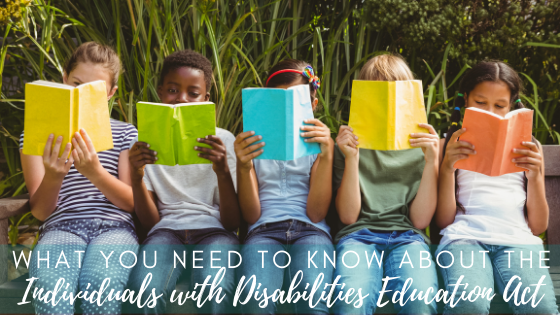
What You Need To Know About the Individuals With Disabilities Education Act
Determining that your child has dyslexia can be a worrisome occurrence, but there are resources and regulations, including the Individuals with Disabilities Education Act, designed to help your child flourish.
The Individuals with Disabilities Education Act and Section 504 of the Rehabilitation Act
Both the Individuals with Disabilities Education Act and the Rehabilitation Act mandate that all students, including those with dyslexia, be provided with the resources for academic success in a classroom setting. Not surprisingly, parental involvement and advocacy are frequently necessary for students with dyslexia to receive the resources to which they are entitled.
The Individuals with Disabilities Education Act (IDEA) provides special education and guides the development of an Individualized Education Plan (IEP) to help students with dyslexia who happen to be behind in academic learning. An IEP will be designed to help the student bridge the gap and get back to grade level. Typically, a dyslexic students IEP will include additional language instruction as well as assistive technology and accommodations. IEPs are reviewed each year and students with IEPs will be re-evaluated every three years.
Your child’s school may try to accommodate dyslexic students who aren’t too far behind in learning with a 504 plan. Named for section 504 of the Rehabilitation Act, which is one of the first civil rights bills protecting those with disabilities, a 504 Plan will modify a student’s regular classroom setting to make minor accommodations, such as additional time for testing or assignments. While a 504 Plan may work for children with minor learning differences such as anxiety or ADHD, it does not give enough protection and individualized instruction for children with dyslexia.
What to do if you think your child will benefit from an IEP
If you think you child will benefit from an IEP, there are several steps you should take:
- Start by documenting the difficulties your child is having in school.
- Schedule a meeting with your child’s teacher to share your concerns.
- Submit a request for a Full Individual Evaluation (FIE) to your child’s school. This will typically be addressed to the school counselor, principal or vice principal.
- Plan for an IEP meeting. Parents are required to attend and you can also expect that there will be several members of the school staff there, which can include teachers, counselors, school administrators and/or a school psychologist.
- Review the recommendations that result from the meeting, which will be codified into an individual plan specific for your child. Only sign if you are in agreement with the committee.
- Make sure that the term dyslexia is utilized somewhere in the IEP. In this case, it is very important that the subtype Specific Learning Disability is named since children with dyslexia need a different instructional manner than that of their neurotypical reading counterparts.
Ideally, parents and school personnel will work together to create a plan that works for your child. However, if you don’t feel that your child is getting what they need, an education advocate can help you challenge the school’s recommendations and develop a plan that is appropriate for your child’s needs.
Supporting academic success through dyslexia therapy
Dyslexia therapy outside of the classroom will benefit your child, and will work with your child’s IEP. Contact us today to learn more about how Dyslexia on Demand can help your child achieve classroom success.








